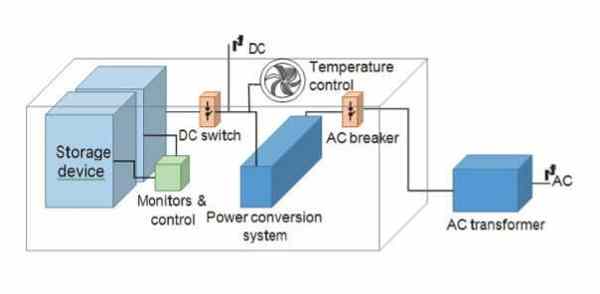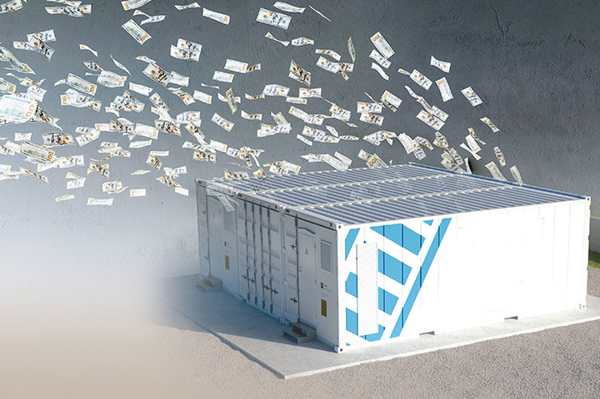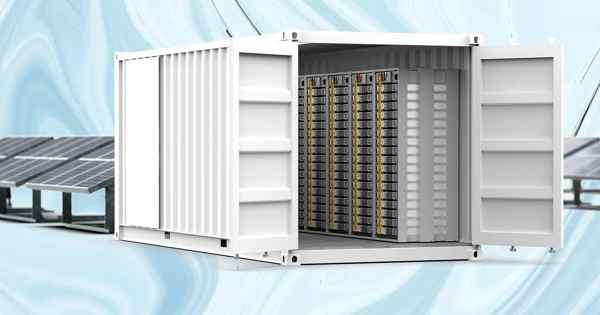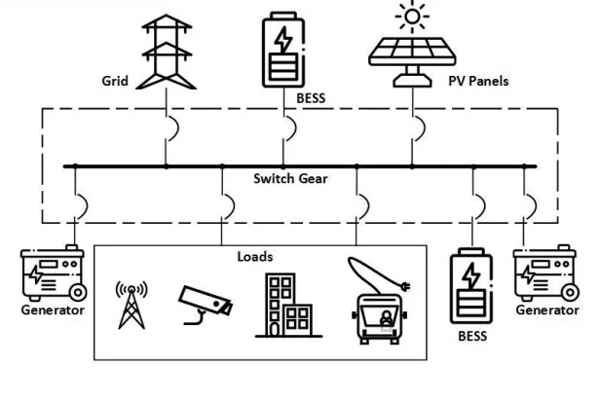ماذا تعني بيس في البطارية?
مع تحول العالم نحو الطاقة المتجددة وزيادة مرونة الشبكة, من المحتمل أن تسمع الاختصار "بيس" أكثر وأكثر. ماذا تعني بيس في سياق البطاريات, وهل هو مجرد اسم آخر لبطارية كبيرة, أو شيء أكثر? فهم هذا المصطلح هو مفتاح التنقل في عالم تخزين الطاقة الحديث.
في قطاع الطاقة, Bess يرمز إلى نظام تخزين طاقة البطارية. من الأهمية بمكان أن نفهم أن BESS ليس فقط البطارية نفسها; إنه كامل, نظام متكامل يتضمن وحدات البطارية, نظام إدارة بطارية حيوي (خدمات إدارة المباني), نظام تحويل الطاقة (أجهزة الكمبيوتر أو العاكس), برنامج التحكم, وجميع مكونات السلامة اللازمة. فكر في البطارية كخزان الوقود, لكن بيس هو كامل, محرك ذكي جاهز للتخزين وتقديم الطاقة عند الطلب.

في جيكس سولار, نحن متخصصون في توفير حلول BESS الكاملة هذه. عندما يحتاج العميل إلى تخزين الطاقة, نحن لا نسلح لهم بطارية فقط; نقوم بتصميم نظام شامل حيث تعمل جميع الأجزاء في وئام لتوفير آمنة, موثوق, وقوة فعالة. دعنا نستكشف ما يستلزمه ذلك.
ما هي عيوب بيس?
يوفر نظام تخزين طاقة البطارية فوائد لا تصدق, ولكن مثل أي تقنية رئيسية, من المهم أن يكون لديك وجهة نظر متوازنة وفهم عيوبها المحتملة قبل إجراء استثمار. لذا, ما هي السلبيات التي يجب مراعاتها?
العيوب الأساسية لـ BESS هي التكلفة الرأسمالية المقدمة كبيرة, إنه العمر التشغيلي المحدود مع تدهور جميع البطاريات بمرور الوقت, خسائر كفاءة الرحلة المستديرة (يتم فقد نسبة مئوية صغيرة من الطاقة أثناء الشحن والتفريغ), ال الفضاء المادي مطلوب للتثبيت, و الاعتبارات البيئية تتعلق بالتصنيع وإعادة تدوير نهاية العمر. لكن, التكنولوجيا الحديثة, خاصة الأنظمة التي تستخدم فوسفات الحديد الليثيوم (LFP) البطاريات, يتحسن باستمرار لمعالجة هذه التحديات, تعزيز القيمة الطويلة الأجل والاستدامة.

الغوص أعمق: نظرة واقعية على تحديات بيس
دعنا نقسم هذه العيوب المحتملة:
- ارتفاع تكلفة مقدمة: بيس هو استثمار كبير. تكلفة البطاريات, عاكس عالي الجودة, مكونات السلامة, ويضيف التثبيت المهني ما يصل.
- وجهة نظرنا: في حين أن التكلفة الأولية عامل رئيسي, نحن نشجع العملاء على النظر في التكلفة المقيدة للتخزين (LCOS) والقيمة طويلة الأجل. يمكن أن يقلل Bess بشكل كبير من فواتير الكهرباء (خاصة عند الاقتران بالطاقة الشمسية), توفير قوة احتياطية لا تقدر بثمن, والتحوط ضد ارتفاع أسعار الطاقة. حوافز مثل ائتمان ضريبة الاستثمار الفيدرالية (مركز التجارة الدولية) في الولايات المتحدة. كما يقلل بشكل كبير من التكلفة الصافية.
- عمر محدود & تدهور: مكون البطارية في Bess لا يدوم إلى الأبد. يفقد كمية صغيرة من السعة كل عام ومع كل دورة شحن/تفريغ.
- وجهة نظرنا: هذا هو المكان الذي يعد اختيار التكنولوجيا الصحيحة أمرًا بالغ الأهمية. نضع الأولوية لبطاريات LFP, التي لها عمر طويل جدا (المزيد عن ذلك التالي), ونحن نتصميم أنظمة حتى لا يتم التأكيد عليها دون داع, تعظيم حياة خدمتهم. أ 10+ عمر العام هو الآن قياسي لجودة LFP BESS.
- خسائر كفاءة الرحلة المستديرة: أنت لا تخرج 100% من الطاقة التي وضعتها. يضيع بعضها كحرارة.
- وجهة نظرنا: الليثيوم أيون الحديثة بيس فعالة للغاية, مع كفاءة الرحلة المستديرة عادة بين 85% و 95%. بينما ليست مثالية, هذا أعلى بكثير من تقنيات التخزين القديمة. نستخدم العزف والمكونات عالية الكفاءة لتقليل هذه الخسائر إلى الحد الأدنى.
- البصمة المادية: تتطلب وحدات BESS مساحة مادية مخصصة, والتي يمكن أن تكون اعتبارًا للمنازل أو الشركات الأصغر.
- وجهة نظرنا: التصميمات الحديثة مثل البطاريات المثبتة على الحائط وأنظمة تثبيت الحامل المضغوطة موفرة للغاية للفضاء. نحن نعمل مع العملاء للعثور على أفضل موقع آمن, متوافق, وتدخل الحد الأدنى.
- المخاوف البيئية/إعادة التدوير: تصنيع البطاريات لها بصمة بيئية, وإعادة تدوير بطاريات الليثيوم أيون هي صناعة نامية.
- وجهة نظرنا: نفضل كيمياء LFP, الذي يتجنب استخدام الكوبالت, معدن مع مخاوف أخلاقية وبيئية كبيرة. نحن أيضًا ندعم ونبقى على اطلاع على صناعة إعادة تدوير البطاريات المتنامية, تشجيع إدارة نهاية الحياة المسؤولة.
ما هو عمر بطارية بيس?
عند التفكير في بيس, عمرها عامل حاسم في تحديد قيمته الإجمالية. كم سنة من الخدمة الموثوقة التي يمكن أن تتوقعها من البطاريات ضمن إحدى هذه الأنظمة المتقدمة?
مكون البطارية في بيس الحديث, الذي يستخدم عادة LFP (الفوسفات الحديد الليثيوم) كيمياء, تم تصميمه لحياة تشغيلية طويلة. يمكنك أن تتوقع عمومًا الحياة التقويمية 10 ل 20 سنين و دورة الحياة تتراوح من 3,000 إلى أكثر 6,000 دورات تفريغ الشحن الكاملة. لضمان هذا الأداء, يقدم معظم الشركات المصنعة BESS ذات السمعة الطيبة 10-ضمان العام هذا يضمن أن تحتفظ البطارية بجزء كبير (على سبيل المثال, 70%) من قدرتها الأصلية بعد عقد من الخدمة.

الغوص أعمق: مفاتيح Bess طول العمر
عدة عوامل تساهم في الحياة الطويلة لسيارة مصممة جيدًا:
- كيمياء متفوقة (LFP): كما ناقشنا, LFP أكثر استقرارًا كيميائيًا وقوة من أنواع الليثيوم الشائعة الأخرى مثل NMC. هذا يجعلها مثالية لركوب الدراجات اليومية المطلوبة في تطبيق تخزين الطاقة الشمسية. بطارية تتنقل مرة واحدة في اليوم 15 ستعرض السنوات 5,475 دورات, رقم تم تصميم بطاريات LFP عالية الجودة للتعامل معها.
- BMS الذكية: نظام إدارة البطارية أمر حيوي. يعمل كوصي, منع البطارية من العمل خارج حدودها الآمنة (درجة حرارة, الجهد االكهربى, حاضِر) وضمان موازنة جميع خلاياها الداخلية. هذه الحماية تقلل بشكل كبير من الإجهاد وتمتد حياة البطارية.
- تغيير حجم النظام المناسب: إن نظام الحجم المناسب لتحميل المنزل أو العمل يعني أن البطارية لا يتم دفعها باستمرار إلى حدودها المطلقة (أقصى معدل تفريغ أو 100% عمق التفريغ), الذي يقلل من البلى مع مرور الوقت.
- الإدارة الحرارية: العلبة BESS ونظام التبريد الخاص بها (سلبي أو نشط) تم تصميمها للحفاظ على البطاريات ضمن نطاق درجة حرارة التشغيل المثالية. هذا مهم بشكل خاص في المناخات الدافئة مثل سنغافورة, نظرًا لأن الحرارة المفرطة هي عدو أساسي لطول بطارية.
قصة GYCX الشمسية: "نخبر عملائنا دائمًا أن BESS هو أحد أصول الطاقة على المدى الطويل. عندما نقوم بتثبيت نظام مع بطاريات LFP وضمان لمدة 10 سنوات, نحن نوفر لهم عقدًا أو أكثر من توفير الطاقة والأمن المتوقع, مما يجعل الاستثمار الأولي أكثر وضوحا."
ما هو الفرق بين UPS و Bess?
قد تسمع "UPS" و "بيس" وأعتقد أنهم مجرد طريقتين لقول "قوة النسخ الاحتياطي." بينما يستخدم كلا النظامين البطاريات لتوفير الطاقة عندما تنخفض الشبكة, هدفهم الأساسي, حجم, والمدة مختلفة جدا.
أ يو بي إس (إمدادات الطاقة غير المنقطعة) عادة ما يتم تصميمه لتوفير على المدى القصير, طاقة نظيفة (عادة لبضع دقائق) للسماح للإلكترونيات الحساسة مثل أجهزة الكمبيوتر والخوادم بإغلاقها بأمان أثناء انقطاع التيار الكهربائي. أ بيس (نظام تخزين طاقة البطارية), على الجانب الآخر, هو نظام أكبر بكثير مصمم ل إدارة الطاقة طويلة الأمد, قادرة على تشغيل الدوائر الأساسية أو حتى منزل كامل لعدة ساعات أو أيام, وإدارة الطاقة بذكاء من مصادر مثل الطاقة الشمسية.

الغوص أعمق: حكاية من نظامين للبطارية
دعونا نقارنهم وجها لوجه:
| ميزة | إمدادات الطاقة غير المنقطعة (يو بي إس) | نظام تخزين طاقة البطارية (بيس) |
|---|---|---|
| الهدف الأساسي | حماية الإلكترونيات من مواطن الخلل; السماح بالإغلاق الآمن. | توفير قوة طويلة الأمد; تخزين الطاقة الشمسية; إدارة تكاليف الطاقة. |
| وقت التشغيل | دقائق (عادة 5-30 دقيقة). | ساعات إلى أيام. |
| سعة | تقاس في VA أو واتس (على سبيل المثال, 1500فرجينيا / 900دبليو). كيلوواط منخفضة. | تقاس في KWH (على سبيل المثال, 10كيلووات ساعة, 20كيلووات ساعة, أو أكثر من ذلك بكثير). |
| مقاس | صغير, سطح المكتب أو الوحدة المثبتة على الرف. | جهاز كبير, وحدة مثبتة على الحائط, مجلس الوزراء, أو حتى حجم حاوية الشحن. |
| اندماج | جهاز إضافي بسيط. | تم تثبيته بشكل احترافي ودمجه في النظام الكهربائي للمبنى. |
| تكنولوجيا | غالبًا ما يستخدم بطاريات حمض الرصاص المختومة. | دائمًا ما يستخدم ليثيوم أيون المتقدم (LFP) البطاريات. |
| الاستخدام الرئيسي | حماية معدات تكنولوجيا المعلومات (أجهزة الكمبيوتر, الخوادم, معدات الشبكة). | نسخة احتياطية كاملة, الاستهلاك الذاتي الشمسي, المعيشة خارج الشبكة, ذروة الحلاقة. |
باختصار, UPS يشبه طوف الحياة لبياناتك, يمنحك وقتًا كافيًا للوصول إلى بر الأمان. بيس مثل الجزيرة الخاصة بك, السماح لك بالعيش بشكل مريح ومكتف بالاكتفاء لفترة طويلة لفترة طويلة. في GYCX Solar, نحن نركز على توفير هذه "الجزيرة الخاصة" حلول بيس لمرونة الطاقة الحقيقية.
ما هو أكبر تخزين للبطاريات في العالم?
لقد تحدثنا عن بيس للمنازل والشركات, ولكن كم يمكن أن تحصل هذه التكنولوجيا? لفهم إمكاناتها الكاملة, إنه لأمر رائع أن ننظر إلى المشاريع الضخمة على نطاق الشبكات التي تحول شبكات الطاقة في جميع أنحاء العالم.
حتى وقت مبكر إلى وسط 2025, واحد من تظل أكبر أنظمة تخزين طاقة البطارية في العالم هي مرفق تخزين طاقة Moss Landing Energy في مقاطعة مونتيري, كاليفورنيا. هذا بيس الضخم, تديرها Visstra Energy, لديه قدرة تشغيلية لـ 750 ميجاوات (ميغاواط) و 3,000 ميجاوات ساعات (ميغاواط ساعة). تعرض مشاريع هذا المقياس الهائل القدرة المذهلة لتكنولوجيا BESS لدعم شبكات الطاقة بأكملها ودمج كميات هائلة من الطاقة المتجددة.

الغوص أعمق: مقياس تخزين الطاقة على مستوى الشبكة
ماذا يفعل 750 ميغاواط / 3,000 MWH Bess مثل Moss Landing فعليًا?
- النطاق في المنظور:
- قوة (ميغاواط): 750 MegaWatts هي قوة فورية كافية لتوريدها تقريبًا 560,000 المنازل.
- طاقة (ميغاواط ساعة): 3,000 Megawatt-Hours هي إجمالي كمية الطاقة التي يمكن أن تخزنها. (يتذكر, 1 MWH = 1,000 كيلووات ساعة). قد يستخدم المنزل النموذجي 25-30 كيلو واط في اليوم, لذا 3,000 MWH يعادل استخدام الكهرباء اليومية لـ 100,000 المنازل. يمكن لهذا بيس الخروج الكامل 750 ميغاواط من الطاقة ل 4 ساعات مستقيمة (750 MW x 4H = 3,000 ميغاواط ساعة).
- الغرض من بيس على نطاق الشبكة:
- تخزين الطاقة المتجددة: هذه البطاريات العملاقة تخزن الطاقة الشمسية والرياح الزائدة التي تم إنشاؤها خلال منتصف اليوم أو ليالي عاصفة ثم إطعامها إلى الشبكة خلال فترات الطلب الذروة في المساء.
- استقرار الشبكة: يمكنهم الاستجابة بالمللي ثانية لتحقيق الاستقرار في تواتر الشبكة والجهد, منع انقطاع التيار الكهربائي وتحسين جودة الطاقة.
- استبدال "الذروة" النباتات: إنهم يحلون بشكل متزايد محل الغاز الطبيعي غير الفعال والملوث "Peaker" النباتات التي تم فصلها تقليديا لتلبية الطلب المرتفع لبضع ساعات فقط في اليوم.
- التكنولوجيا: تتكون هذه المرافق من مئات كبيرة, حاويات بحجم الحاوية, كل معبأة مع رفوف من وحدات البطارية و BMS المرتبطة بها, الإدارة الحرارية, وأنظمة السلامة. هذه الحاويات متصلة بأنظمة تحويل الطاقة على نطاق واسع (أجهزة الكمبيوتر) ثم إلى شبكة الطاقة عالية الجهد.
يوضح النطاق المذهل للمشاريع مثل Moss Landing أن نفس تقنية BESS الأساسية التي نستخدمها في GYCX Solar لمنزل واحد أو عمل قوي, موثوق, وقابل للتطوير بما يكفي لتشغيل المدن بأكملها. إنه في قلب الانتقال العالمي إلى مستقبل طاقة نظيفة.
لذا, ماذا يعني بيس? وهذا يعني اكتمالا, نظام ذكي يوفر السيطرة على طاقتك. في حين أن هناك اعتبارات مثل التكلفة والعمر, تقدم تقنية LFP BESS الحديثة آمنة, طويل الأمد, وحل قوي. من وحدة واحدة مثبتة على الحائط في منزلك إلى مرافق توسيع الشبكة الضخمة, بيس1. هو المفتاح لإلغاء تأمين الإمكانات الكاملة للطاقة المتجددة وضمان إمدادات طاقة مرنة.
إذا كنت مهتمًا بكيفية تنسخ BESS مع خطط الطاقة الخاصة بك, يتمتع فريقنا في GYCX Solar بخبرة في تصميم حل لك. اتصل بنا اليوم لمعرفة المزيد عن منتجات تخزين طاقة البطارية لدينا.
فهم مفهوم BESS بحيث يمكنك مقارنة وفهم مفاهيم البيانات المتعلقة بالبطارية بشكل أفضل. سيساعدك هذا على اختيار المنتج الذي يناسب احتياجاتك من شركتنا. ↩
